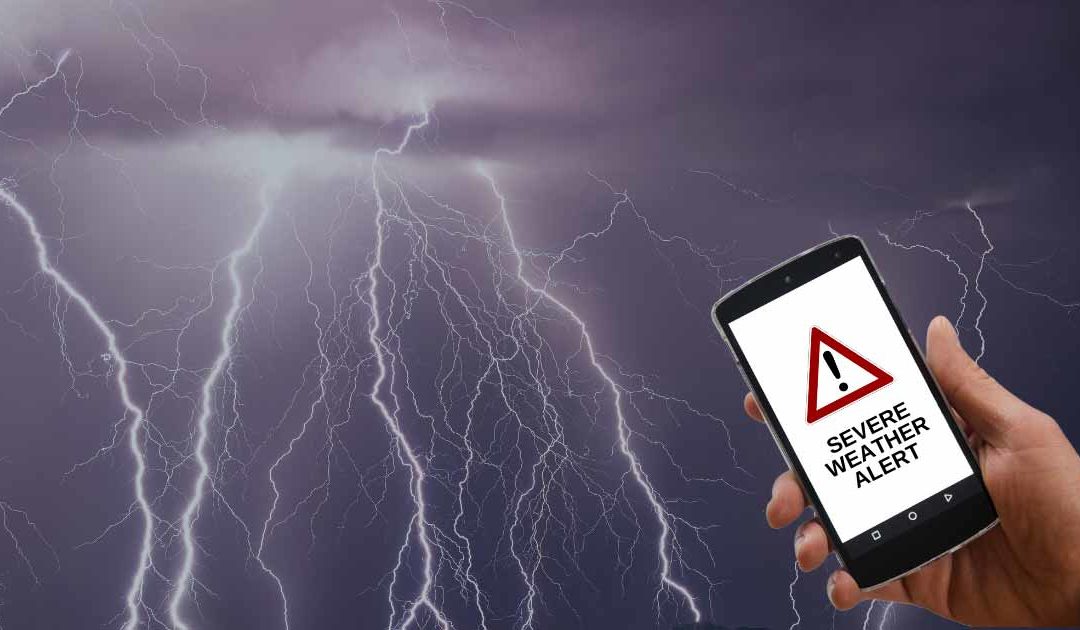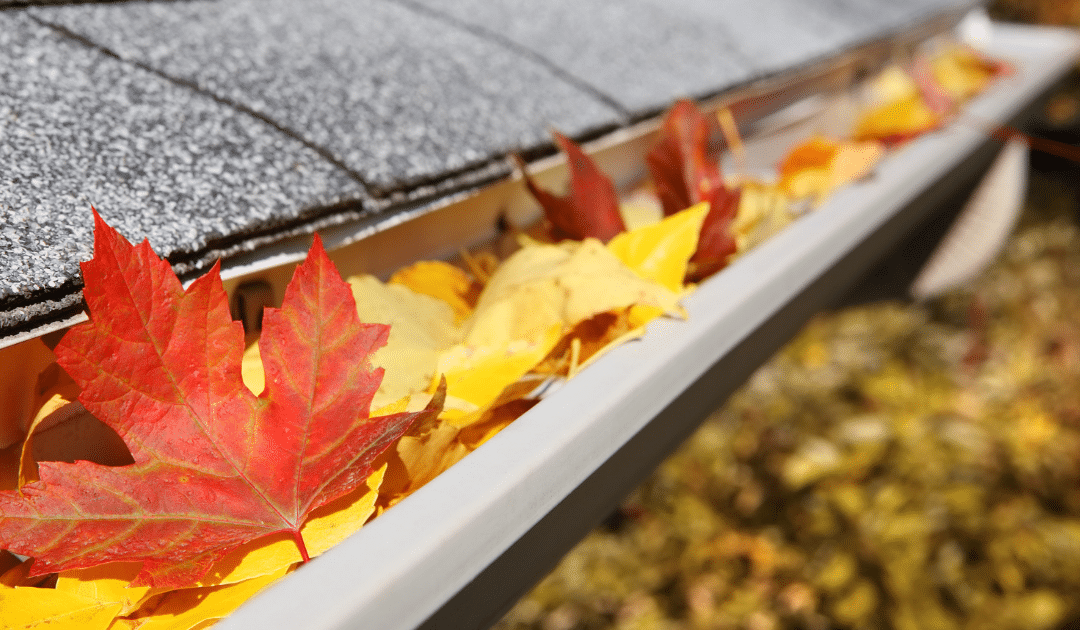
by California Casualty | Firefighters |
It’s tempting to pull in front of a fire hydrant or park in a fire lane—especially if it’s just for a minute. But your quick decision could be the difference between life and death for someone who needs emergency assistance.
We’ve all been taught not to park in front of fire hydrants, but did you know your vehicle, by law, should be parked at least 15 feet away to allow access for fire engines to park and safely connect to the hydrant? The same concept applies to fire lanes, which are established areas where fire engines can gain quick access to buildings. But these lanes have an even larger safety-distance of 20 feet. So, even if it’s just a short stop- think again.
When you block a fire hydrant or park in a fire lane you…
…deny first responders access to buildings during emergencies.
In an emergency, every second counts. Generally, fire lanes are in busy urban areas with lots of traffic. Chances are there’s not a parking spot, and certainly not an area large enough for a fire engine, ambulance, and police cars. Yet these essential first responders need to get close enough to take action. The fire lane allows them to do that. Fire lanes are clearly marked, usually with curbs painted yellow or red and signs that read “No Parking or Standing Fire Lane.”
… make it difficult to access water during a fire.
The early firefighters used bucket brigades to put out fires. These dedicated individuals would line up and pass a bucket of water from person to person until they were successfully able to stop the fire. Fire hydrants were an engineering marvel, first appearing in the early 1800s. Today, they are essential sources of water during emergencies.
…. are ignoring their important purpose.
Maybe you just have something to drop off or pick up or you have a task that will only take a few minutes. You’ve been in places where you can’t park but you can load and unload. Fire lanes and the space near fire hydrants are not loading and unloading zones. You may make the argument that you’re not technically parked if someone is sitting in the car, right? You may even have your hazard lights on, signaling that this is temporary. But having your vehicle in the lane or in front of a hydrant is not allowed. That’s true even if someone is in the car and your vehicle is running. If you’re caught in these places, you could be subject to a ticket, fines, and more.
… are breaking the law.
Laws vary from state to state, but in all cases, there are repercussions for parking in front of a fire hydrant or in a fire lane. In many places, you are subject not only to fines but immediate towing. Don’t chance it.
… are preventing someone from getting the emergency assistance they need.
The most important reason of all is the reason why these laws about fire lanes and hydrants were established. Any delay in getting to a fire or helping victims could cost lives. It’s a similar reason to why you move over for emergency vehicles. You want to make sure that first responders have a clear path to their destination so they can help as many people as possible.
Drive safe and be sure to keep your distance when parking next to fire lanes and fire hydrants.
For more safety tips click here.
This article is furnished by California Casualty, providing auto and home insurance to educators, law enforcement officers, firefighters, and nurses. Get a quote at 1.866.704.8614 or www.calcas.com.

by California Casualty | Safety |
Many things in life come without warnings. But fortunately for us, severe weather isn’t one of them.
Meteorologists are constantly tracking dangerous storms and weather patterns. Tapping into their early warnings is key to protecting your home, your possessions, and your family. Here’s what you need to know to stay one step ahead of Mother Nature.
First, let’s take a look at severe weather.
There are many types of severe weather. Examples include thunderstorms, snowstorms, hail storms, blizzards, hurricanes, tornados, and cyclones. High winds and flooding associated with some of these weather events can do great damage to your home and belongings. Having a disaster plan is great, but knowing when disaster is going to strike is crucial. That’s where early warning systems come in.
Chances are you already have an emergency alert system.
The U.S. government has the capability to send wireless emergency alerts (WEAs) right to our cell phones. Agencies like the National Weather Service and FEMA are among the organizations that can do so. There is no signup required and you are not charged for the data used. Alerts come automatically with a special sound and vibration. Most phones are enabled for these alerts; to find out if your particular model is, check the WEA enabled list or contact your wireless carrier.
Check to see that your phone is enabled for alerts.
WEAs may be free but if your phone isn’t enabled to receive them, you won’t. Fortunately, it’s easy to activate this setting.
Apple (IOS) phones
-
- Go to settings, then notifications.
- Scroll down to government alerts.
- Slide the circle so that it is green for the alerts you want. For severe weather, you will want emergency alerts and public safety alerts.
Android phones
-
- Go to apps & notifications.
- Click on notifications.
- Turn on “allow alerts.”
- Make sure each alert that you want is enabled. For severe weather, you will want extreme threats, severe threats, public safety messages, and state and local tests.
While WEAs are good ways to get information, generally these alerts won’t arrive until there is an emergency. You may find value in getting advance notice.
Other ways to get emergency information:
If you do not have a WEA-capable phone, you can still get critical and timely information from NOAA Weather Radio, local media broadcasts, and the emergency alert system on your TV or desktop and mobile devices. Make sure to tune in if you suspect an impending weather emergency. In addition, your local utility company, township, city or state may offer free alerts. Check with your electric or gas company, and with city hall or municipal government. Find out how to sign up for their free alerts.
There’s an app for that, and it’s free.
You can get advance notice and more robust information by downloading a weather app on your smartphone or mobile device. Here are some popular free options.
-
- AccuWeather: Weather Alerts provides hourly forecasts, news, and updates as well as weather-tracking radar.
- AlertSense offers public safety alerts as well as severe weather warnings. You can set quiet hours so only emergency alerts are sent with sound.
- Emergency: Alerts is free from the American Red Cross. With this app, you can look up Red Cross shelters and alert loved ones you are safe. It also comes with a flashlight, a strobe light, an alarm, and preloaded content on everything from hurricanes to disasters that is accessible without an Internet connection
- FEMA offers real-time weather alerts from the National Weather Service for up to five locations of your choice. It also provides information on storm preparedness and filing a flood claim.
- Storm Shield is free with options for paid upgrades. This app provides alerts in text and voice and tracks conditions in up to 5 locations.
- WeatherBug is free with options to purchase in the app. It offers forecasts in real-time as well as weather maps, and more.
- The Weather Channel for Apple or Android offers live radar updates and local weather forecasts.
Stay one step ahead of Mother Nature with coverage from California Casualty.
No matter how well you prepare for severe weather, unfortunately, sometimes Mother Nature gets the upper hand. That’s why having the correct home insurance coverage is so important. Make sure you and your family are fully protected. For questions on home insurance or ways, you can save on your own insurance policy, call a California Casualty agent today at 1.866.704.8614 or visit our website www.calcas.com.
This article is furnished by California Casualty, providing auto and home insurance to educators, law enforcement officers, firefighters, and nurses. Get a quote at 1.866.704.8614 or www.calcas.com.

by California Casualty | Safety |
Football season is finally here! If you’re anxiously getting ready to start the season with some pre-game festivities, there are a few important safety reminders you should brush up on before kickoff. Here’s how you, your friends and family can all tailgate responsibly.
Tip #1: Handle raw meat with care.
You may be known for your spicy chicken wings or beefy burgers but make sure you know the rules for handling raw meat.
-
- Before the tailgate, store meat on the lowest shelf of the refrigerator or in a meat drawer if you have it. Plan to eat or freeze it within 3 to 4 days.
- On tailgate day, store your meat in leakproof plastic bags or containers, with ice in a cooler.
- Wash your hands before and after handling raw meat.
- Wash utensils, cutting boards, and plates that come in contact with raw meat.
- Use separate cutting boards, plates, and utensils for raw meat and for produce.
- Don’t use the marinade from your raw meat on cooked meat. If you want to use it, cook it to a boil first.
Tip #2: Fire up the grill carefully.
Grilling outdoors is a favorite family activity. But injuries from burns or fires can put a real damper on family fun.
-
- Have a fire extinguisher on hand just in case. If you don’t need it, someone else might.
- Enforce a 3-foot “kid-free” zone around the grill. Never leave the grill unattended.
For propane grills:
-
- Be careful not to overfill a propane tank.
- Transport your propane tank safely, so that it is upright and secured in your vehicle.
- Check the connection between the propane tank and the fuel line to make sure there are no leaks. You can do this by making a solution of 50% liquid dish soap and 50% water, and brushing it on the hose connections. If there are leaks, you will see air bubbles when you turn on the propane.
For charcoal grills:
-
- Never add lighter fluid to an already lit fire on a charcoal grill. That can cause the fire to flare up and even ignite the chemical in the can or cause a chemical smog.
- While you can use lighter fluid to start a charcoal grill, consider using rolled-up newspaper instead. Or consider a charcoal chimney, which packs the briquettes together for easier lighting.
- Use plenty of water to douse hot coals after you’re done cooking. Give them a stir to make sure there are no lit embers.
- Do not put the wet coal and embers in plastic, paper, or wooden containers after use. They could still be hot enough to start a fire. Wait until they are completely cool and put them in a coal-safe container to transport them home.
Tip #3: More food safety to keep in mind.
A few hours out in the sun could turn a delicious dish into a potentially hazardous one. Protect your family from food poisoning by following guidelines for food safety.
-
- When grilling, use a food thermometer to check the temperature of your meat. According to gov, chicken should be cooked to an internal temperature of 165°F and ground beef to at least 160°F.
- Nonperishable foods, such as breads, chips, and cookies, can be left out but should be covered for freshness. Condiments like ketchup and mustard are also okay to sit out due to their acid content.
- Perishable foods that typically are refrigerated should not sit out for longer than 2 hours.
- When in doubt, toss it out. If you’re unsure if food is safe to eat, don’t take a chance on it. Throw it out.
Tip #4: Protect yourself from the sun and heat.
Even on a cloudy fall day, you can get sunburned or experience dehydration. Protect yourself and your family.
-
- Wear sunscreen whenever you will be outside for an extended period of time. Reapply every 2 hours.
- Wear sunglasses to protect your eyes and a hat to protect your head from UV rays.
- Find a shaded area near your tailgate to escape the sun and the heat. Or create your own shaded area with a pop-up tent or beach umbrella.
- Alcohol can dehydrate you. It causes your body to remove fluids. Drink water as much as possible and in addition to the alcohol.
- Be aware of the signs of dehydration: muscle cramps, fever/chills, dry mouth/skin, fast heartbeat, confusion, drowsiness, irritability, or a dark urine color. Drinking water is usually the best way to rehydrate.
Tip #5: Appoint a designated driver and drive safely.
Tailgates are all about having a good time, and usually involve alcohol. But drinking impairs driving with sometimes deadly results.
-
- Before you even leave, choose your DD — designated driver – the one who will remain sober. If you have a regular group of friends that tailgate together, you can rotate that duty.
- Better yet, plan to tailgate sober. You can always celebrate after the game, back at home.
- As you search for the perfect tailgate spot, watch for children and adults darting in front of your car. Do the same when you exit after the game.
- Despite your best efforts, accidents can still happen. If you are the victim of a parking lot accident, know your car insurance coverage and alert your insurer as soon as possible.
- If there’s no one who is sober and can drive home, call a cab or ride-share service. It’s far better to get home safely than endanger yourself and others.
Hosting a party instead of tailgating? No worries. Check out our hosting safety guide here.
This article is furnished by California Casualty, providing auto and home insurance to educators, law enforcement officers, firefighters, and nurses. Get a quote at 1.866.704.8614 or www.calcas.com.

by California Casualty | Consider This, Homeowners Insurance Info |
We don’t think much about our heat, electrical, or plumbing until they stop working…
Like a regular health checkup, a home system checkup includes routine maintenance that can help prevent costly repairs and future emergencies.
Homeowners, follow our checklist to keep your home systems running smoothly all season long.

HVAC (Heating, Ventilation and Air Conditioning) System
The HVAC system is responsible for heating and cooling your home. Regular maintenance can help lower your utility bills, increase your system’s lifespan, and ensure you are breathing healthy air.
-
- Check the air filter. If it’s dirty, it will make your furnace work harder. Clean or replace the filter every three months.
- Clean the air vents. You can vacuum the vents to help prevent blockages. If you suspect there’s a buildup of dirt and grime, consider scheduling an air duct cleaning.
- Vacuum lint from the clothes dryer vent that leads to the outside of your house.
- Adjust your programable thermostat for heat rather than air conditioning. If your thermostat takes batteries, replace them at this time.
- Cover the outdoor air conditioning unit once you no longer are using it for the season. That will protect it from the weather, dirt, and debris.
- Rotate your ceiling fans’ blades clockwise in cool months and counterclockwise in warm months to keep heat moving in a direction that minimizes the effort of your HVAC system.
- If you haven’t done so this year, schedule an annual professional checkup to make sure your HVAC system is in good working order.
- Even the best furnaces don’t last forever. You may need to replace your furnace after 10-25 years.

Plumbing System
A plumbing system delivers fresh water to your sinks, bathtubs, toilets, and other fixtures. It also takes away water and waste to a sewer or septic tank. Regular maintenance will help prevent issues such as leaks, clogs, and frozen pipes, which can be disruptive and costly.
-
- Clean drains in your sinks and tubs by pouring half a cup of baking soda followed by half a cup of white vinegar.
- Remove mineral deposits from your showerheads by filling a plastic bag with vinegar. Secure it with a rubber band over the showerhead and leave it overnight. In the morning, you should be able to wipe any buildup away.
- Clean your garbage disposal to prevent it from hosting harmful bacteria or growing mold. This Old House suggests this approach: Pour a half cup of baking soda in the disposal. Wait 30 minutes, then pour in one cup of white vinegar. Let the mixture foam for 3 minutes, then rinse with hot water. Finally, grind up two cups of ice and a cup of salt while running cold water. You also can grind lemon peels at the end for a fresh scent.
- Flush your water heater to remove any mineral buildup. You can find instructions online or call a professional.
- Check your faucets inside and outside to make sure they are not dripping or leaking.
- Check under the sink for any leaks or stains, which could signal water damage or mold.
- Check any exposed pipes in your home for leaks and seal them. Insulate pipes in places that aren’t heated.
- Disconnect outside water hoses to prevent them from freezing. Turn off underground sprinkler systems.
- Clear debris from your
- Call a plumber if there are issues.

Electrical System
An electrical system powers your lights, appliances, and more. Working around electricity requires knowledge and skill to take the proper safety precautions. If you’re unsure of how to do something, consult a trained professional.
-
- Inspect your breaker panel. Check for signs of corrosion. Flip the breakers on and off to make sure they move easily and do not stick. (Make sure first to alert members of your household that you are switching off electricity so they can prepare accordingly.)
- Test your outlets. You can buy a cube or block tester at any hardware store. You simply plug it in, and it lights up to indicate common issues. Also, test each outlet for tightness. Outlets may wear out over time. Finally, consider installing tamper-resistant outlets in any areas where children may be able to reach.
- Place your hand on outlets and light switches to check for excessive heat. Also be aware of any “hot wire” smell when a light is on or an appliance is plugged in, or popping and cracking sounds. These indicate that you may need to replace that outlet or switch.
- Look at exposed wires and cables in your basement and other areas of your home. If you notice damage, replace them.
- Make sure exterior outlets are covered so that they are not damaged by the weather and animals.

Security System
Your home security system protects you from threats. No matter what system you have, a semi-annual check can keep it in top working order.
-
- Inspect your sensors. Make sure they are firmly attached to windows or doors. Try to set off a motion sensor to ensure it is working properly.
- Replace batteries if your system uses them.
- Check lighting and replace bulbs as needed.
- Make any adjustments needed to the camera angles. This is a good time to clean the lens.
- Trim bushes that have overgrown and might provide cover for a thief.
- Tighten loose screws in gates, door hinges, knobs, and locks.
- Check your warranty or contract to see if you qualify for an upgrade.

Home fires spike in the fall and winter. Being prepared is key and could save your life if you are the victim of an unexpected house fire.
-
- If you have not done so already, purchase smoke alarms that also function as carbon monoxide detectors. Carbon Monoxide is a poisonous, odorless gas that claims over 400 lives each year.
- Install detectors on every level of your home, including inside of bedrooms and in common rooms.
- Test and change batteries in older detectors or alarms.
- Replace them after 10 years.
- Have a disaster plan in case of a home fire and keep all other fire safety materials, like fire extinguishers, in well-working condition.
Take the proper precautions to avoid winter home hazards and keep your home in good working order this season.
For more fall maintenance tips click here.
This article is furnished by California Casualty, providing auto and home insurance to educators, law enforcement officers, firefighters, and nurses. Get a quote at 1.866.704.8614 or www.calcas.com.

by California Casualty | Nurses |
If a natural disaster strikes your community, what will you do?
As a nurse, your first instinct is to help. Whether you work at a school, a hospital, or clinic setting, your skillset is uniquely valued during a disaster. Here’s how you can help your patients cope after a natural disaster.
What types of natural disasters can you expect in your area?
Different parts of the U.S. are more prone to certain disasters than others, according to Popular Science. You’re more likely to experience wildfires in the western states and snowstorms in the Midwest and northeastern U.S. Tornadoes are common in south-central states while hurricanes often strike along the eastern seaboard. There are earthquakes in the west, and flooding happens pretty much everywhere. Not only do these disasters result in property damage, but they can also cause severe injury and even loss of life. Your nursing skills are much needed to minimize pain and suffering.
Why do nurses play key roles in a disaster?
As a nurse, you are a trusted professional. People look to you for guidance. You not only bring expertise in the medical field, you know how to coordinate care while helping to comfort patients, relieving some of their stress and fear.
In addition, disaster preparedness was likely part of your nursing training. If it wasn’t, or if you need a refresher, consider a disaster certification from the American Nurses Credentialing Center.
What are ways that nurses can help in a disaster?
Nurses play pivotal roles in a disaster, delivering onsite care to the injured. Often working amid chaos and with limited resources, nurses triage patients and administer medical care. If more serious care is needed, nurses help coordinate transport to the nearest hospital. Victims of disaster may experience post-traumatic shock syndrome, and nurses also monitor patients’ mental health and guide them to resources. In addition, nurses help displaced people find temporary shelter and food and get access to prescriptions as needed.
Helping in a disaster is not for everyone. There are potential safety and security threats. There are primitive conditions. There can be a significant time commitment away from your home and family. If you are able to clear your schedule to volunteer, consider the other attributes that will help make you successful in a disaster setting: (1) Your clinical expertise covers a wide range of medical conditions. (2) You are comfortable working in high-stress situations and can work through emotions. (3) You are able to work in rough conditions, perhaps without access to electricity, water and basic supplies. If you have the skills, the time, and the desire, disaster nursing could be right for you.
What is a school nurse’s special role following a disaster?
In addition to helping onsite following a disaster, we can’t forget about school nurses and the roles they play. They deal with the mental and physical effects among students, parents, teachers and staff. For families made homeless by the disaster, or those who need mental health services, a school nurse provides important connections to community resources. Similarly, she connects staff with district resources for mental and physical health.
How can you help your community prepare for a disaster?
You don’t necessarily have to volunteer in a disaster to help your community. You can be there to help prepare for a disaster in advance by assisting hospitals, schools, and towns in the creation of a comprehensive disaster plan.
Nurses can help with community education, leading disaster preparedness clinics, and giving people the knowledge to create their own disaster plans to make it safely through a disaster.
You can utilize resources from trusted organizations in developing the right program for your school, hospital, organization, and community. Consider these resources:
How can you volunteer to help in future disasters?
If you are interested in volunteering your time, make sure you have up-to-date vaccinations for traveling, and be prepared to leave immediately. The following organizations welcome disaster-related nurse volunteers:
This article is furnished by California Casualty, providing auto and home insurance to educators, law enforcement officers, firefighters, and nurses. Get a quote at 1.866.704.8614 or www.calcas.com.










